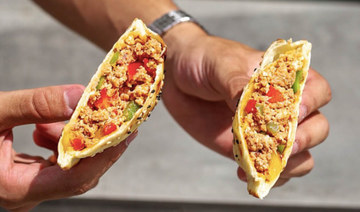PORTLAND, Maine: China is showing no signs of slowing its demand for American lobster this year despite disruption to the supply chain and international trade caused by the coronavirus pandemic.
Chinese demand for the crustaceans grew dramatically during the 2010s in part because of the expansion of the country’s middle class. The lobsters are especially sought after in winter because they are a popular delicacy on Chinese New Year, which is Feb. 1 this year.
American exporters sent more than 13.2 million pounds (6 million kilograms) of lobster to China during the first 11 months of 2021. That was about 6 percent more than the same time period the previous year.
The pandemic has made the already difficult task of sending live seafood across the globe more challenging, but Maine lobster exporters are gearing up for a decent Chinese New Year, said Bill Bruns. The operations manager at The Lobster Co. in Arundel said shipments are complicated by the fact the company can’t send lobsters to Beijing because of COVID-19 restrictions — but they are able to send to other airports, such as Shenzhen.
“Chinese New Year is always a crapshoot the last couple years,” Bruns said. “But I’m prepared for it. I have the staff. Because otherwise it’s going to be a long spring.”
China buys lobsters from the US — where the industry is based mostly in Maine — and Canada, where the industry is situated in the Atlantic provinces. Exports from Canada were up even more than the US the first 11 months of 2021 compared to 2020, said John Sackton, an industry analyst and founder of SeafoodNews.com.
Signs point to a strong season for the industry, Sackton said. Consumption of seafood could also get a boost from the Beijing Winter Olympics, which are set to start a few days after Chinese New Year, he said.
“I’ve seen nothing that consumption of lobsters at Chinese New Year this year won’t exceed last year’s,” Sackton said.
The US lobster industry weathered similar challenges during the first year of the pandemic in 2020 and ultimately had a strong export season. The value of exports was down from the record year of 2018, but still well over $100 million.
High prices for lobsters have played a role in the value of this year’s exports. The price of a live 1.25-pound hard shell lobster was $11.25 per pound in New England this month, according to business publishing company Urner Barry. That was more than a third higher than January 2021.
To send lobsters to China, American and Canadian fishermen have to trap them in the cold waters of the Atlantic Ocean. Bad weather has made that difficult for Maine fishermen this year, but harvesters are still having a decent winter on the water, said Kristan Porter, president of the Maine Lobstermen’s Association.
“When guys get out there, they are doing OK,” Porter said. “It takes someone hardier than me to fish the wintertime.”
Pandemic hasn’t slowed China’s love for US lobster
https://arab.news/2krjh
Pandemic hasn’t slowed China’s love for US lobster
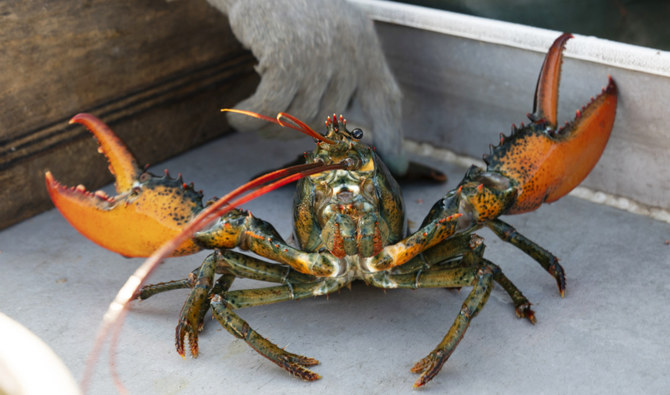
- American exporters sent more than 13.2 million pounds (6 million kilograms) of lobster to China during the first 11 months of 2021
Recipes for success: Chef John Mark offers advice and a salmon batayaki recipe
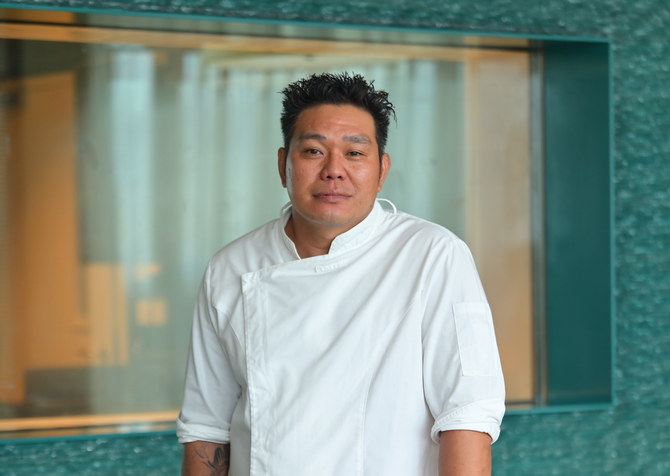
DUBAI: Chef John Mark has worked at a number of prestigious establishments over the years, in the Maldives, Mauritius, the UAE, and India, among others. Now, he’s the chef de cuisine at Japanese restaurant Gishiki 45 in The St. Regis Red Sea Resort.
Here, Mark discusses embracing mistakes, his favorite dish to make, and the importance of a healthy working environment.
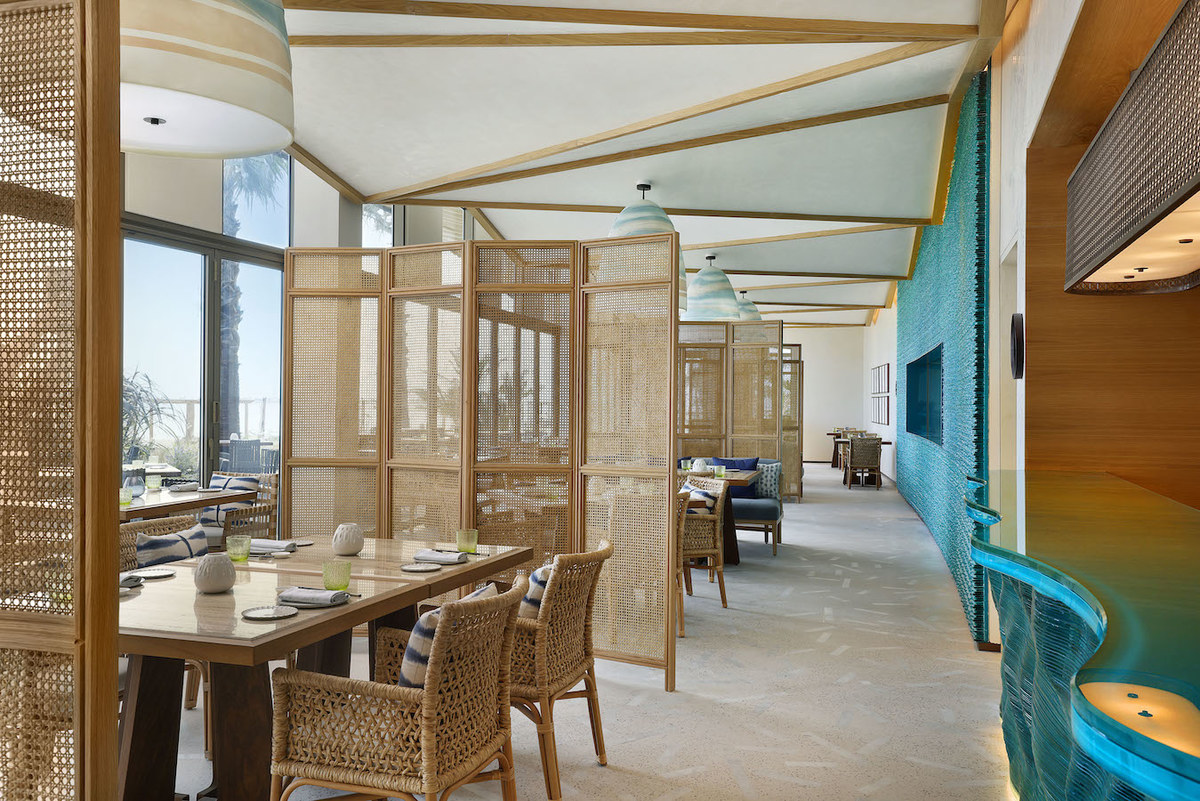
What one ingredient can instantly improve any dish?
I love the smell of garlic and the smell of onion. These two ingredients are very important in Asian cuisine; they give the dishes a nice aroma and flavor, and can enhance any dish.
When you go out to eat, do you find yourself critiquing the food?
I’m not one to criticize any chef or restaurant unless there are mistakes in the dish that I ordered. I respect chefs. I respect people who are working in the hospitality. And if I do need to say something, I make sure to say it in the right manner.
What’s the most common mistake that you find in other restaurants?
That the service team and the kitchen are at war. This is the chef’s responsibility. We need to make sure that the service team and the kitchen are one. It’s so important, because, as chefs, we cook, but the service team deal with the guests. The only thing that we want is to make the guests happy. So we need to be a team.
What’s your favorite cuisine?
Thai food. I love coconut flavors and Thai food has coconut in almost all the dishes. The flavors and the smell are rich. It makes me happy.
What’s your go-to dish if you have to cook something quickly at home?
My daughter loves to eat. I let my family try different cuisines, but she really loves pasta. So, I cook pasta for my daughter — and for my wife of course. We also have a famous dish in the Philippines called chicken adobo, and when I am home I like to cook that for my family.
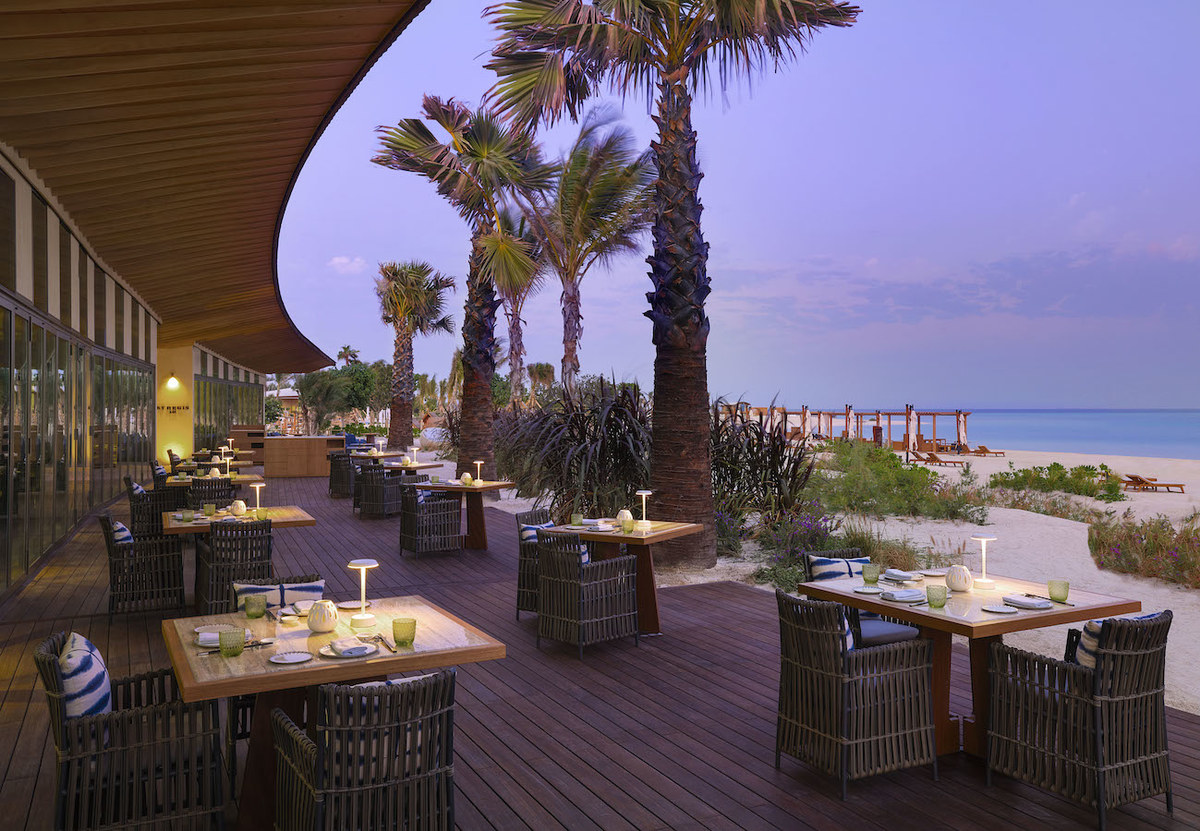
What customer request most annoys you?
You cannot be annoyed at your guests as a chef. You need to be flexible. We are here, in this world, to learn, and this is a huge opportunity. I can’t just focus on one thing like a horse; I have to keep an open mind. Why not try what they ask for, if this is what they want?
What’s your favorite dish to cook and why?
It’s something we’re famous for in the Philippines. It’s very authentic, you only really see it in the villages. It’s called beggar’s chicken. It’s so delicate. It’s a long process. You need to marinate the chicken and stuff it, then you wrap it in banana leaf. Then, you put mud on it. You cook it in the mud. So, when its cooked, you need to break the mud and open it. It smells amazing.
As a head chef, what are you like?
When I started as a chef, there was a lot of tension and a lot of shouting, but I don’t think this is a good environment. I don’t want it to be quiet in my kitchen, but I don’t want tension. Of course, I can be a little strict, but I don’t want anyone to shout at my staff. I have to talk to them nicely. Shouting is not on my menu.
Chef Mark’s Salmon Batayaki recipe
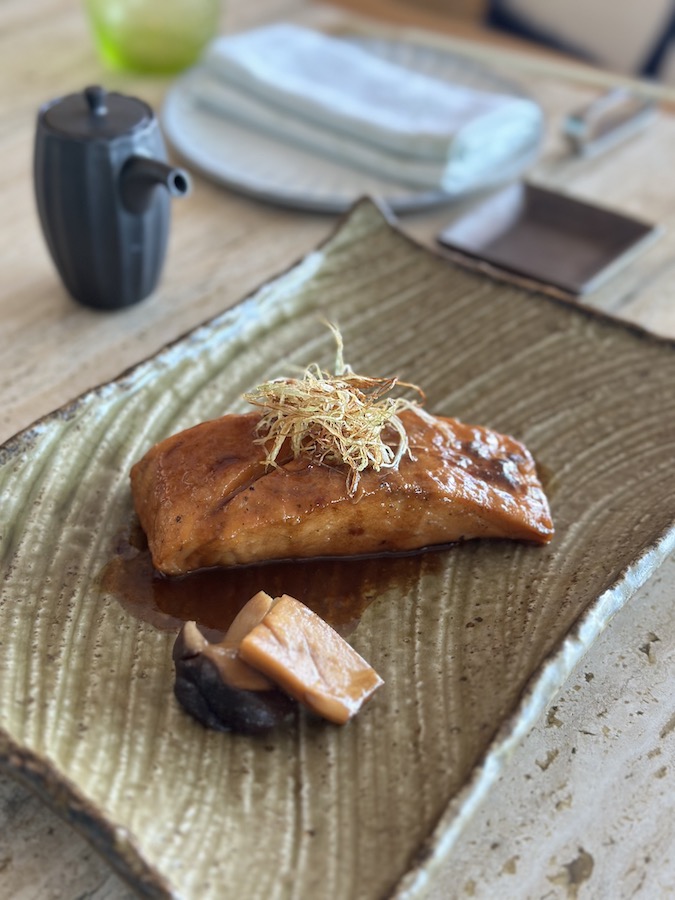
INGREDIENTS:
160g salmon; 1 oyster mushroom
For the dashi water:
Mix 100ml water; 5g konbu; 2g katsuobushi
For the batayaki sauce:
Mix 2 spoons soy sauce; 20g butter; 50ml dashi water; 1 spoon yuzu juice
INSTRUCTIONS:
1. Season the salmon with salt and pepper and dust with corn flour.
2. Heat fryer to 180 celsius and fry the salmon for 2 minutes.
3. Prepare a heated non-stick pan. Heat your batayaki sauce.
4. Put your salmon and mushroom in the batayaki sauce and simmer until the sauce becomes shiny and has a buttery texture.
5. Garnish with crispy leek and serve.
Chef Igor Macchia talks Italian-infused creations, collaboration with Riyadh’s new Lavazza Coffee Design eatery
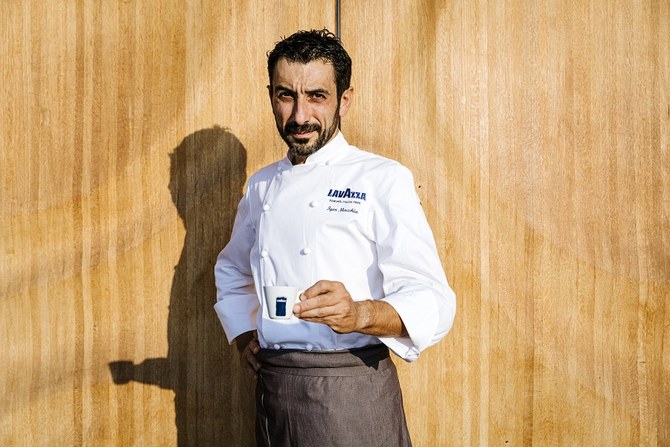
DUBAI: Italian chef Igor Macchia is excited about the opening in Riyadh of Lavazza Coffee Design, which infuses his signature dishes and brews with Middle Eastern tastes and flavors.
Having designed the menu for the establishment, which opened on May 23, Macchia is looking forward to Saudi Arabia customers experiencing his creations.

“The creative process started from a local consumer taste perspective combined with the Lavazza Italian DNA and my Michelin-star background from La Credenza Restaurant (San Maurizio Canavese, Torino, Italy),” said Macchia in an interview with Arab News.

“I’ve visited different restaurants and spots in Middle East and tasted a lot of local recipes to get inspiration for my project for Lavazza Coffee Design store. The result is a rich and tasty menu, ranging from breakfast to dinner, ideal to be paired with 1895 premium coffee, selected by Lavazza for this store in Riyadh.”
Inspired by Lavazza’s flagship stores in London and Milan, the Riyadh location boasts signature design elements, such as the iconic chandelier made up of more than 300 illuminated coffee beans and the main counter finished with exhausted coffee powder and resin for an original effect.
Additionally, the coffee experience is elevated by the introduction of Lavazza’s premium 1895 collection sourced from around the world. It consists of limited-quantity microlot coffee, specialty blends and single-origin brews.
During the interview, Macchia spoke about his favorite dish, early mistakes and management style.
When you started out as a professional, what was the most common mistake you made when preparing/cooking a dish?
I’ve never done a mistake — joking. I think the most common mistake was to enrich a lot a recipe looking for the best taste while, at the end, it’s sufficient to start by buying good quality ingredients and just treat ingredients by giving value to them for a wow effect.
What’s your top tip for amateur chefs, cooking at home?
Cooking is all about passion. Recipes are good to start with, but they need a personal touch, to become real wonderful dish.
What one ingredient can instantly improve any dish?
Parmesan cheese in all kinds of forms: wrapped, chopped, etc.
When you go out to eat, do you find yourself critiquing the food? What’s the most common mistake/issue that you find in other restaurants?
When I go out for dinner, it is a moment of pure pleasure and I love enjoying it without any fussing or critiquing. I personally like restaurants where clients’ satisfaction is at the center of the experience. The most common mistake is building up a very beautiful venue but with no soul in it. The vibe you can feel inside your preferred spot will make the difference.
When you go out to eat, what’s your favorite cuisine/dish to order? And why?
It all depends on the mood: it can be a traditional place like an Italian trattoria as well as a fine-dining restaurant or ethnic food which I do love.
What’s your go-to dish if you have to cook something quickly at home?
Easy and fancy at the same time: rigatoni with butter and Parmigiano Reggiano cheese, finished with a pinch of Lavazza ground coffee powder.
What request/behavior by customers most annoys you?
Clients are our everyday guests: we need to listen to their requests. Maybe one suggestion coming from a client, one day it will be a new dish on the menu.
What’s your favorite dish to cook and why?
The risotto, no doubt about it. I spent my summer childhood in the Vercelli area, where the Piedmont rice comes from. The risotto has a special place in my heart.
What’s the most difficult dish for you to get right, whether on your current menu or not?
I think the “Tiramisu by Lavazza” — the iconic Italian coffee-based dessert — should be the one. The sponge cake, instead of the lady fingers biscuits, needs to be prepared in the right way to be light and airy. Then you finish the dish with mascarpone foam with syphon and pour with the 1895 Cocoa Reloaded espresso on top. Different steps and texture for an amazing result.
As a head chef, what are you like? Are you a disciplinarian? Do you shout a lot? Or are you more laid back?
I’m personally a disciplinarian but I’ve learned, during my career, that the team motivation is key to reach great results. No need to shout, jst need to build a team spirit.
Recipe: MASCARPONE & DRIED FRUITS TOAST

Start by selecting a sour dough bread, cut 1 cm slice and gently toast it.
Spread generously with mascarpone cheese, add pomegranate seeds, decorate with fresh mint leaves and finish with a sweet sauce made with honey and chopped dried fruits like dates, pistachio and nuts. Serve it to your guests for a fresh and tasty breakfast. Ideal to be paired with your preferred coffee.
Where We Are Going Today: Casa Noor
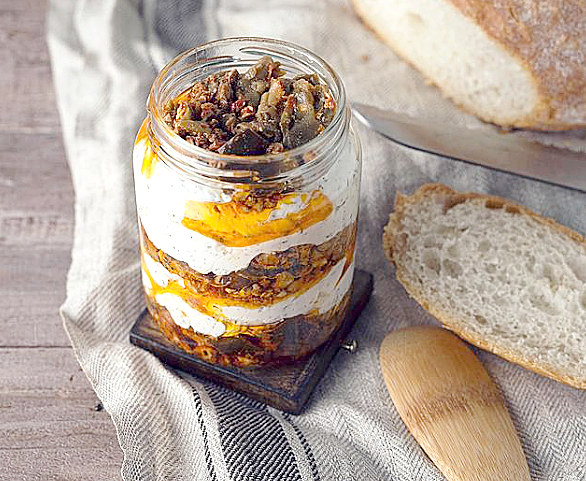
When Noora Ahmed Almubsher decided to start a home-based business, she went all in. In 2021, armed with a degree in business, she used her passion for food to fill in the gaps she found in the market. She wanted to create something innovative that reminded her of home, and thus named her entrepreneurial pursuit “Casa Noor.”
While the word “casa” translates to “home” in Spanish, a place which generates comfort, warmth and deliciousness, her products and “noor” or “light” in Arabic, are very Saudi-centric.
Based in the historic Tarout Island in Qatif in the Eastern Province, she handpicks ingredients from local farms while sprinkling in what she calls the “Noora” touch.
Her purple-hued Saudi-made sauerkraut will perk up any boring dish, offering a perky pickled pick-me-up that is both healthy for your gut and fun for your taste buds. I added it to the middle of a grilled cheese sandwich, the oozing melted sharp cheddar merged well with the sauerkraut bits that offered a fresh, tangy bite to the crunchy toast.
We also tried her pickled loumi lemons in a jar, an essential staple in Qatif. Those lemon-lime bits of citrus goodness have a distinctive taste as it requires very high temperatures and humidity to generate that signature Sharqiya flavor. They are perfect for chicken marinates, to scoop up into rice, or drizzle into tart desserts.
For the Noora Tea blend, which was curated specifically to celebrate Founding Day, Almubsher brought in ingredients from different parts of the Kingdom and combined them into one mix. She joked that it was extra personal since it shares her first name, but it is also a loving tribute to the late Princess Nourah bint Abdulrahman, whose name is proudly displayed at the front of the world’s largest woman-only university in Riyadh.
“Our goal is to demonstrate that Saudi Arabia has the capacity to produce world-class products that reflect our rich agricultural heritage,” she told Arab News. “These products are not only healthy and free from preservatives and hydrogenated oils, but they also taste good.”
“We want to convey to the world — and to our own community — that we have the resources and expertise to offer clean, sustainable, and locally-sourced food options that are accessible to everyone. This aligns perfectly with the broader objectives of Vision 2030, which aims to diversify the economy and promote local industries,” she said.
For more details and to order, visit her Instagram @casa.noor.
Where We Are Going Today: ‘Modawar’ cafeteria in Jeddah

- Modawar keeps things exciting by occasionally introducing new fillings and shapes, such as the sambusa and musakhan filling inspired by the traditional Palestinian dish
If you are in Jeddah and craving a convenient yet scrumptious breakfast, look no further than Modawar. The recently opened grab-and-go breakfast spot has come all the way from Alkhobar and promises a variety of options.
Modawar specializes in baked pastries and is modeled after a classic cafeteria. The Saudi brand lives up to its name, serving customers small circular pies loaded with a variety of contents inspired by traditional breakfast dishes.
The brand has something for everyone’s taste, including falafel with tahini, potatoes and eggplant, cheese and egg, and feta cheese with a special blend. The shakshuka pie, mixed cheese pie and chicken pie are worth trying.
But what sets the eatery apart are the diverse options for group orders. The liver and egg box, featuring eight pieces each of the two flavors, is great for sharing.
I chose a custom box of 12 pies with a combination of liver, shakshuka and egg pies. Each was bursting with flavor and the cheese melted perfectly. To top it off, every box comes with a selection of sauces, including tahini and hot sauce, along with a cup of hot karak for the perfect breakfast kick during the weekend.
Modawar keeps things exciting by occasionally introducing new fillings and shapes, such as the sambusa and musakhan filling inspired by the traditional Palestinian dish.
The outlet also offers a selection of fresh juices, including watermelon and orange, as well as iced and hot red tea.
For more information and updates, visit Instagram @modawar.sa.
Where We Are Going Today: Armin restaurant in Riyadh

- Armenian cuisine is a blend of Middle Eastern, Mediterranean and Eastern European influences
RIYADH: Riyadh’s popular Armenian restaurant, Armin, takes visitors on a journey of authentic flavors with its heartwarming, aromatic and herby dishes.
Armenian cuisine is a blend of Middle Eastern, Mediterranean and Eastern European influences with ingredients such as rice, lamb and sumac.
Armin hits the taste nail on the head with a selection of Middle Eastern dishes featuring chicken and lamb kebabs, tabouleh, fattoush, vine leaves, and a popular eggplant dip, muttabal.
The menu provides guests with options aplenty, with vegetarian and omnivorous diners catered for, making it an ideal spot for dining out.
Upon arrival, guests are spoiled with freshly baked pita bread, perfect to plunge into their dipping of choice.
The best appetizer on the menu is the hummus with meat and topped off with crispy pine nuts, making a perfect combination of nutty flavors.
A must-have side dish is the spicy potato, cooked to perfection with a kick of spice and a touch of garlic and coriander.
The star main course is the shish barak, a traditional Armenian dish consisting of dumplings made with a thin dough wrapper and filled with flavorful beef or lamb with onions and a mix of spices.
Shish barak is boiled, unlike Chinese or Japanese dumplings, which are usually pan fried or steamed.
The only downside of the visit is cost — Armin’s prices are on the high side. But given its customer service and delicious food, it is a price worth paying. Although many dishes on Armin’s menu can be found in Middle Eastern restaurants for a fraction of the price, the quality of the ingredients here is unmatched.






